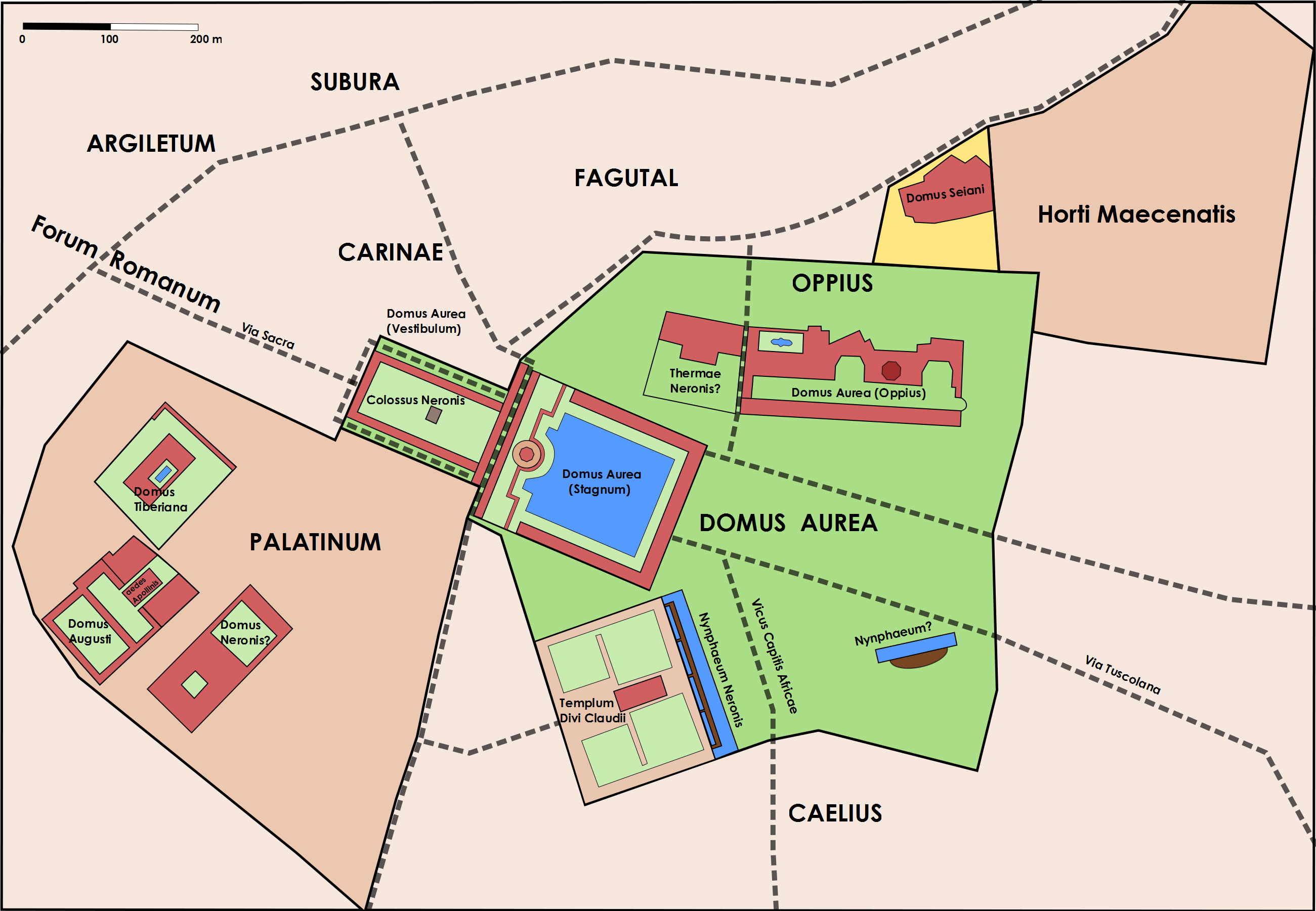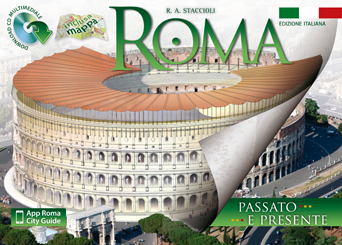In 64 AD most of the centre of Rome was destroyed in an enormous fire which started in the area of the Circus Maximus and reached the top of the Esquiline.
While the story blaming Nero for the fire gained currency as a result of the emperor’s already bad reputation, the destruction wrought by the disaster certainly made it easier to construct the most extensive domus ever built, awarded the epithet aurea for the magnificence of its decoration and the opulence of its buildings.
The architects engaged for the building of the palace, Severus and Celer, decided to adopt the format of a country villa right in the center of Rome: the buildings covered a vast area extending from the Palatine to the Oppian, at the foot of the Celian.
The decoration of the interiors made use of all kinds of precious materials: gold and ivory were everywhere, and the flowers in the paintings were set with precious stones. The ceilings of the banqueting halls were fitted with sliding panels of ivory, so that flowers and perfumes could be scattered onto the diners from above.
The pictorial decoration, entrusted to the painter Fabullus, was in an opulent, magnificent style, depicting figures framed in geometric patterns which were endlessly enriched by the motifs of plants and imaginary creatures.
It is the Oppian Hill sector of this imposing residence that we know best. Built on platforms overlooking the valley in which the Colosseum was later to rise, it was divided into three main blocks.

Photo credits by Cristiano64 under CC-BY-SA license.
The two lateral ones were based on the traditional nucleus of the peristyle villa, their rooms distributed around a porticoed garden.
The central block, separated from the others by large pentagonal gardens, was, on the other hand, built around an octagonal hall, the vault of which was supported by octagonal pillars, with a circular light-well in the center.
The sides of the onoctag gave onto rectangular rooms, which all looked back towards the center of the hall, where a statue was probably placed, lit to striking effect from the light well above.
This was certainly one of the banqueting halls of the domus, perhaps the main one which – Suetonius recounts – rotated continuously on its own axis, like the earth.
After Nero’s death in 68 AD, the emperors who succeeded him returned large parts of the Domus Aurea to the city. Thus, on top of Nero’s palace, rose public monuments like the Colosseum and all the buildings connected with it (eg the gladiators’ barracks, their hospital and the depot for the stage equipment used during the spectacles), the public baths built by Titus and also the state mint (Moneta).

Do you want to know more about the history of Rome?
Check out our guidebook to Rome, with detailed history and Past & Present images of the Pantheon, the Colosseum, Trajan’s Market and all the greatest historical and archaeological sites of the eternal city.
How to get to the Domus Aurea
The Domus Area is located here:
Useful information about the Domus Aurea
Click here below to check more details about:

